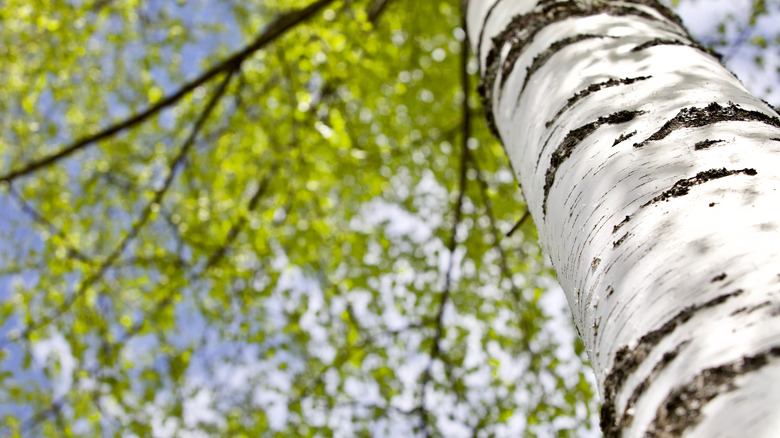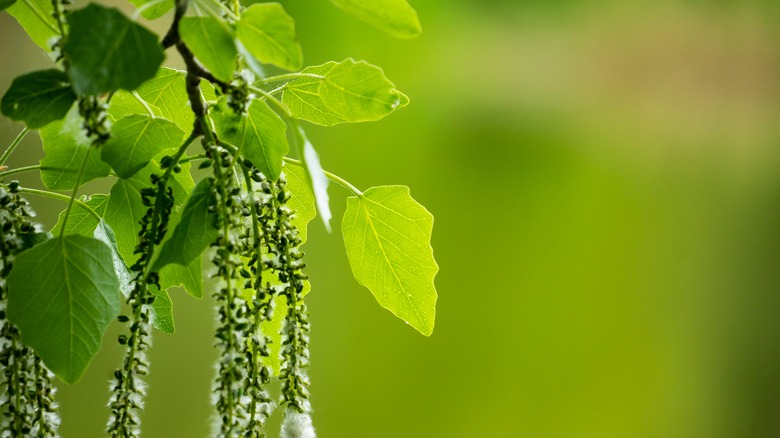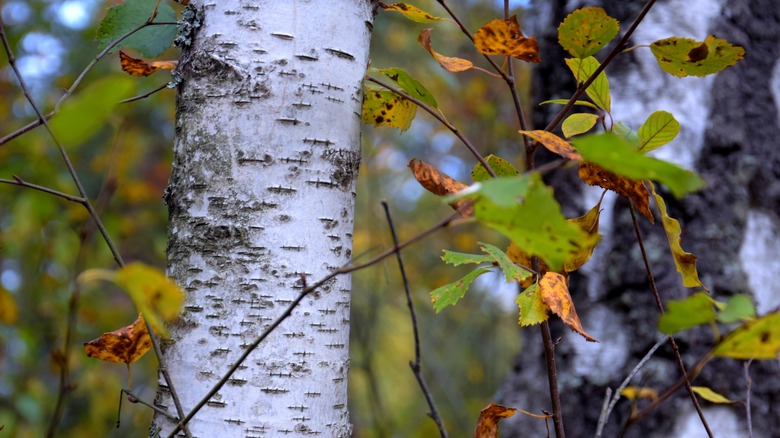The Best Place In Your Yard To Grow Birch Trees (And How Long They Typically Live)
Birch trees, with their beautiful bark, cute catkins, and lovely leaves, are ideal landscape plants for many yards. In the right location, birch trees can live for decades, but sadly, many trees die prematurely. Spending time before planting to work out the ideal spot in your yard to provide your birch tree with the perfect combination of sun, shade, and moisture will set the tree up for a long and healthy life.
There are many common species of birch trees that make excellent landscape trees, from the iconic paper birch (Betula papyrifera) with its distinctive peeling white bark to the weeping river birch (Betula nigra 'Summer Cascade') with its unusual weeping habit and petite height of 15 feet. There is likely a birch tree that fits almost any style and aesthetic. Of course, picking the perfect tree isn't just about looks. The tree also needs to be a good fit for your location. Most birch trees thrive in the cooler climates of USDA zones 2 through 7, though some can handle ones as warm as USDA zone 9.
Light and soil requirements for birch trees
Birch trees are known for their love of moist soil. While some types of birch, like the river birch, can even handle wet soil, most birch trees need good drainage to thrive. Birch trees also require soil with minimal compaction and a slightly acidic pH. Gardeners with more alkaline yards should either amend their soil to lower the pH or consider a birch tree like the paper birch, which can handle more alkaline conditions. Thanks to birch trees' love of water, they should not be planted around septic tank covers or sewer lines as their roots may begin growing into the lines, searching for water. Most varieties of birch can reach up to 50 feet, so they should not be planted under power lines or other overhead wires.
Finding the perfect location for a birch tree isn't just about soil — providing your tree with the right lighting is also essential. Most birch trees have shallow roots that enjoy shade to help them stay cool; however, they also require full sun on their leaves. Finding the perfect location that offers both factors can be challenging, so the U.S. Department of Agriculture recommends examining the northern and eastern sides of your yard in the late afternoon to find spots with shaded ground.
Birch tree care for longevity
If you plant your birch tree in a good location with adequate moisture and sun, it can easily live for 50 years, provided it receives the proper care. While it is common to avoid pruning birch trees in winter as they often "bleed" sap if they are pruned during winter, this sap, while unattractive, is largely harmless. A far greater concern is pruning between June and September, as this makes the trees especially vulnerable to the dreaded bronze birch borer and other insects that can damage or even destroy the tree. While it may be possible to save the tree with pesticides that kill the insects, bronze birch borer infestations are often nearly unnoticeable until it is too late.
Another pest that can be a significant issue for birch trees is the Asian longhorn beetle. These common pests can do major damage to your birch and other trees, with the adults often eating leaves and the larvae tunneling into the tree's wood, where they can cause far more serious damage. Luckily, keeping your trees healthy decreases their vulnerability to these pests.


